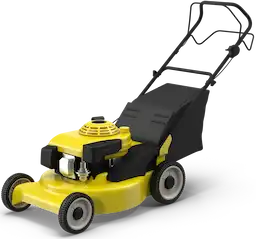Table of Contents
Remove Salt and De-Icer
Salting seems like the easiest solution to remove hardpack and ice buildup from surfaces to keep walking paths safe. However, it isn’t that simple. Salting applications result in detrimental impacts on your lawn and garden. When the ice melts, the toxic salt matter washes into the soil causing drought, scorched edges, and browning or yellowing plants and grass. Essentially, the toxic salt levels make it nearly impossible for your lawn to absorb moisture and the necessary nutrients it requires to thrive.
The moment you notice this damage, it’s important to rinse your plants and lawn with water. Rinsing helps reverse the salt damage and begin the process of regrowth. Additionally, I highly recommend treating your lawn with a pelletized gypsum soil conditioner in addition to the rinse. Growth starts at the roots and because this conditioner counteracts the negative impacts of salt, it’s a crucial aid to ensure your lawn is set up to combat the toxicity levels and begin the process of re-growth early on.
Remove Snow Mold
Snow mold is a lawn disease caused by a fungus that results when the snow starts to melt. It’s extremely easy to spot its whiteish or even straw-like color and is often matted down in patches across your lawn. It’s important to remove quickly in order to revive your lawn after winter. Once snow mold is visible, the damage is mostly done so a fungicide won’t necessarily help.
The good news is there is a solution, and it’s actually easier than applying any sort of pesticides. Simply rake the area to loosen up any matted-down snow mold. This will allow the area to dry. Because snow mold doesn’t kill the roots, once your lawn has dried you can remove the dead grass and your lawn should bounce back. If your lawn isn’t growing in as fully or as quickly as you would like, the best thing you can do is apply a seed blend to encourage growth. We’ll talk more about overseeding below!
Schedule a Yard Clean Up
A happy lawn needs air, light, and water! Post-winter there’s almost always a buildup of leaves and debris that block these elements and suffocate your lawn. In severe cases, buildup like this can lead to mold problems and dead areas, but this is an incredibly easy fix!
To set your lawn up for success all year long and jump-start a dormant lawns growth post-winter, removing the leaves and debris through means of a yard clean-up. A cleanup is not only the best way to revive your lawn after winter, it’s really one of the best gift you can give your lawn! What are you waiting for? Put down your rake and pick up the LawnGuru app. Your lawn will be set up to thrive in a matter of hours!
Remove Thatch
Thatch is a compact layer of both living and dead stems, roots, and leaves. It naturally accumulates between the growing grass and the layer of soil. The presence of thatch is normal but too much accumulation can prevent your lawn from absorbing the nutrients it needs to flourish.
Remember how I said your lawn needs air, water, and light to thrive? Well, too much thatch build-up prevents this so it’s important to dethatch when needed.
Dethatching, also known as power raking, is the process of essentially combing your lawn to remove this compact layer.
Once your lawn has been dethatched, be sure to bag the debris and remove it from the surface of your lawn.
Aerate and Overseed
Overseeding is pretty straightforward, it’s simply applying seed to your lawn. You can seed your entire lawn or focus on areas where your grass is thinner to fill in bald spots.
Aeration is the process of puncturing the soil with small holes to more easily allow nutrients, water, and air to penetrate grassroots directly! When grassroots receive an ample amount of these nutrients, we can physically see the results in a stronger, livelier, and lusher lawn! So if you’ve ever looked over at your neighbors’ green lawn and thought, “I wonder how they keep their lawn so healthy?” they’re likely aerating and overseeding it annually.
Mow the Lawn
This last and final step on how to revive your lawn after winter is to mow your lawn. It’s best to ease into mowing as the season starts to encourage exponential growth throughout the year. In the same way your barber trims split ends, your first cut should take minimal growth off the top of the blades of grass. Mowing regularly keeps your grass at an ideal height for nutrient absorption and photosynthesis. In addition, lawns that are uniform in height are able to distribute nutrients evenly. So what does that mean? Lawns that absorbed nutrients evenly result in healthy, green, and aesthetically pleasing yards you can be proud of!
Give it a try! Take these 7 simple steps to revive your lawn after winter and apply them to your yard. If you don’t have time, pick up your phone and request a quote on LawnGuru! Tending to your lawn in this fashion will always bring satisfaction!


